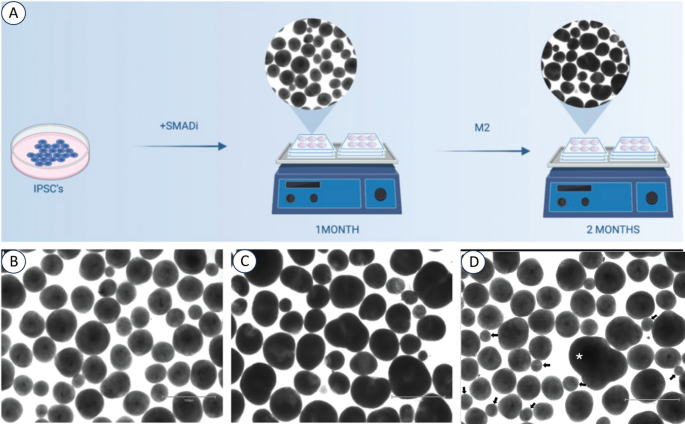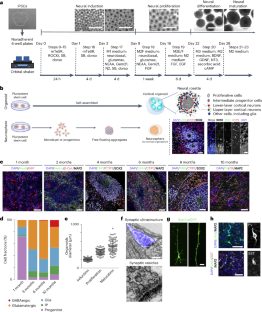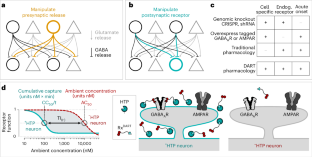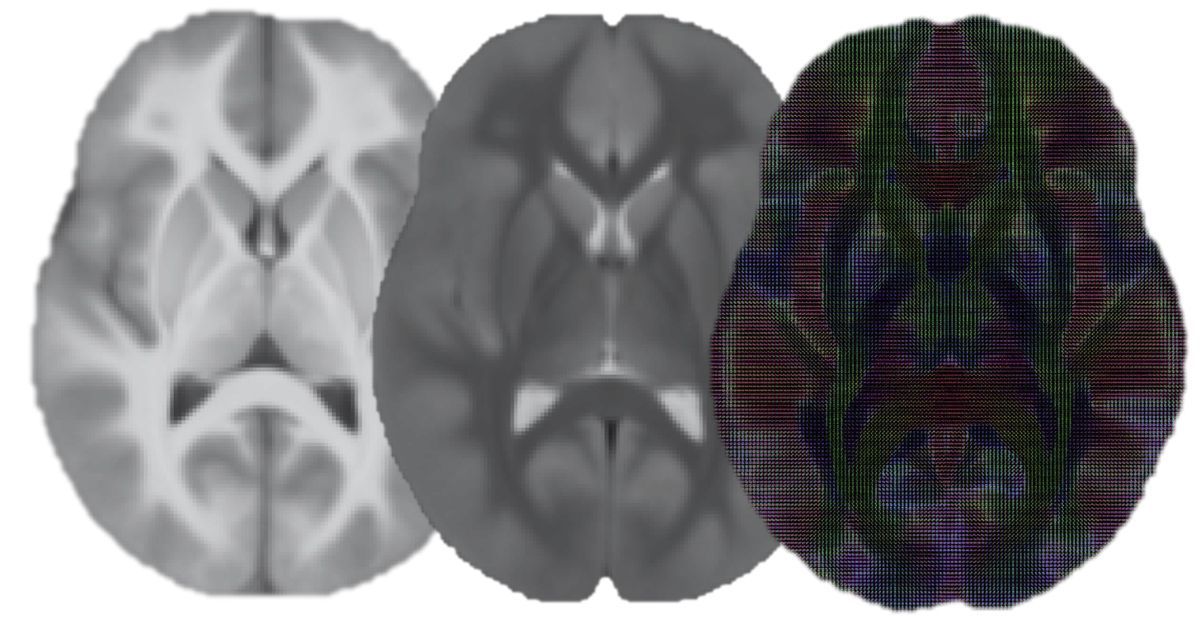2024-06-17 カリフォルニア大学サンディエゴ校(UCSD)
<関連情報>
- https://today.ucsd.edu/story/embryonic-brain-overgrowth-dictates-autism-severity-new-research-suggests
- https://molecularautism.biomedcentral.com/articles/10.1186/s13229-024-00602-8
- https://www.nature.com/articles/s41596-024-00994-0
自閉症の重症度に関するASDの2つのサブタイプの胎生期起源:脳皮質オルガノイドのサイズが大きいほど自閉症が重い Embryonic origin of two ASD subtypes of social symptom severity: the larger the brain cortical organoid size, the more severe the social symptoms
Eric Courchesne,Vani Taluja,Sanaz Nazari,Caitlin M. Aamodt,Karen Pierce,Kuaikuai Duan,Sunny Stophaeros,Linda Lopez,Cynthia Carter Barnes,Jaden Troxel,Kathleen Campbell,Tianyun Wang,Kendra Hoekzema,Evan E. Eichler,Joao V. Nani,Wirla Pontes,Sandra Sanchez Sanchez,Michael V. Lombardo,Janaina S. de Souza,Mirian A. F. Hayashi & Alysson R. Muotri
Molecular Autism Published:25 May 2024
DOI:https://doi.org/10.1186/s13229-024-00602-8

Abstract
Background
Social affective and communication symptoms are central to autism spectrum disorder (ASD), yet their severity differs across toddlers: Some toddlers with ASD display improving abilities across early ages and develop good social and language skills, while others with “profound” autism have persistently low social, language and cognitive skills and require lifelong care. The biological origins of these opposite ASD social severity subtypes and developmental trajectories are not known.
Methods
Because ASD involves early brain overgrowth and excess neurons, we measured size and growth in 4910 embryonic-stage brain cortical organoids (BCOs) from a total of 10 toddlers with ASD and 6 controls (averaging 196 individual BCOs measured/subject). In a 2021 batch, we measured BCOs from 10 ASD and 5 controls. In a 2022 batch, we tested replicability of BCO size and growth effects by generating and measuring an independent batch of BCOs from 6 ASD and 4 control subjects. BCO size was analyzed within the context of our large, one-of-a-kind social symptom, social attention, social brain and social and language psychometric normative datasets ranging from N = 266 to N = 1902 toddlers. BCO growth rates were examined by measuring size changes between 1- and 2-months of organoid development. Neurogenesis markers at 2-months were examined at the cellular level. At the molecular level, we measured activity and expression of Ndel1; Ndel1 is a prime target for cell cycle-activated kinases; known to regulate cell cycle, proliferation, neurogenesis, and growth; and known to be involved in neuropsychiatric conditions.
Results
At the BCO level, analyses showed BCO size was significantly enlarged by 39% and 41% in ASD in the 2021 and 2022 batches. The larger the embryonic BCO size, the more severe the ASD social symptoms. Correlations between BCO size and social symptoms were r = 0.719 in the 2021 batch and r = 0. 873 in the replication 2022 batch. ASD BCOs grew at an accelerated rate nearly 3 times faster than controls. At the cell level, the two largest ASD BCOs had accelerated neurogenesis. At the molecular level, Ndel1 activity was highly correlated with the growth rate and size of BCOs. Two BCO subtypes were found in ASD toddlers: Those in one subtype had very enlarged BCO size with accelerated rate of growth and neurogenesis; a profound autism clinical phenotype displaying severe social symptoms, reduced social attention, reduced cognitive, very low language and social IQ; and substantially altered growth in specific cortical social, language and sensory regions. Those in a second subtype had milder BCO enlargement and milder social, attention, cognitive, language and cortical differences.
Limitations
Larger samples of ASD toddler-derived BCO and clinical phenotypes may reveal additional ASD embryonic subtypes.
Conclusions
By embryogenesis, the biological bases of two subtypes of ASD social and brain development—profound autism and mild autism—are already present and measurable and involve dysregulated cell proliferation and accelerated neurogenesis and growth. The larger the embryonic BCO size in ASD, the more severe the toddler’s social symptoms and the more reduced the social attention, language ability, and IQ, and the more atypical the growth of social and language brain regions.
複雑な神経振動を持つ「半誘導性」皮質オルガノイドの生成 Generation of ‘semi-guided’ cortical organoids with complex neural oscillations
Michael Q. Fitzgerald,Tiffany Chu,Francesca Puppo,Rebeca Blanch,Miguel Chillón,Shankar Subramaniam & Alysson R. Muotri
Nature Protocols Published:03 May 2024
DOI:https://doi.org/10.1038/s41596-024-00994-0

Abstract
Temporal development of neural electrophysiology follows genetic programming, similar to cellular maturation and organization during development. The emergent properties of this electrophysiological development, namely neural oscillations, can be used to characterize brain development. Recently, we utilized the innate programming encoded in the human genome to generate functionally mature cortical organoids. In brief, stem cells are suspended in culture via continuous shaking and naturally aggregate into embryoid bodies before being exposed to media formulations for neural induction, differentiation and maturation. The specific culture format, media composition and duration of exposure to these media distinguish organoid protocols and determine whether a protocol is guided or unguided toward specific neural fate. The ‘semi-guided’ protocol presented here has shorter induction and differentiation steps with less-specific patterning molecules than most guided protocols but maintains the use of neurotrophic factors such as brain-derived growth factor and neurotrophin-3, unlike unguided approaches. This approach yields the cell type diversity of unguided approaches while maintaining reproducibility for disease modeling. Importantly, we characterized the electrophysiology of these organoids and found that they recapitulate the maturation of neural oscillations observed in the developing human brain, a feature not shown with other approaches. This protocol represents the potential first steps toward bridging molecular and cellular biology to human cognition, and it has already been used to discover underlying features of human brain development, evolution and neurological conditions. Experienced cell culture technicians can expect the protocol to take 1 month, with extended maturation, electrophysiology recording, and adeno-associated virus transduction procedure options.
Key points
- This protocol describes the generation of cortical organoids with complex neural oscillations using a ‘semi-guided’ approach, as well as their functional characterization through microelectrode array measurements, calcium imaging and adeno-associated virus transduction.
- The ‘semi-guided’ nature of this approach allows an intermediate between the cellular heterogeneity of unguided approaches and the predictability of guided approaches, which we speculate underlies the emergence of complex oscillations.


